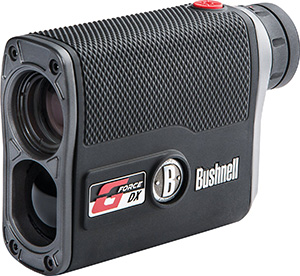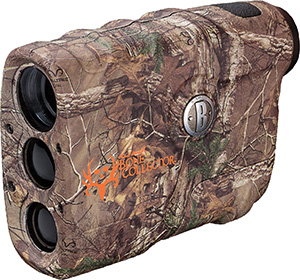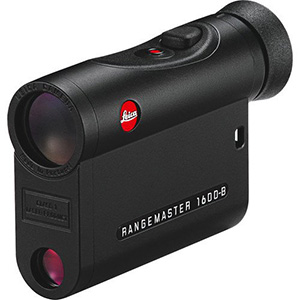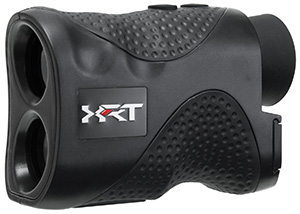Best Rangefinder For The Money – 2019 Rangefinder Reviews
If you are serious about shooting or archery, either as a sport or for hunting, you will eventually find yourself wanting a rangefinder. Once you hit that point, don’t just jump in with both feet and buy the first one you come across. Instead, you should do some careful research, check prices, and read reviews to find out which device is going to be the best for your usage. Here at HuntingOptics.net, we’ve taken care of much of that research for you, and deliver to you detailed, comprehensive reviews of any rangefinder we can get our hands on. This page will tell you what you should look for when attempting to locate the best rangefinder for the money in 2017. First, though, let’s see which range-finders made our Top 5 rankings, and also make sure to check out Cabela’s Rangefinder Bargain Cave With Up To 70% Savings (deals change on a regular basis) before you make a purchase.
Our Best Rangefinders
| Model | Magnification | Range | Power | Fog Proof? |
|---|---|---|---|---|
Leupold RX-1000i Check Today's Price | 6x | 1000 yards | CR2 Lithium battery Our Review | Yes |
Bushnell G-Force DX ARC Check Today's Price | 6x | 1300 yards | CR2 Lithium battery Our Review | Yes |
Bushnell Michael Waddell Bone Collector Check Today's Price | 4x | 200-400 yards | 9 Volt Battery Our Review | Yes |
Leica Rangemaster CRF 1600-B Check Today's Price | 7x | 700-1300 yards | CR2 Lithium battery Our Review | Yes |
Wildgame Innovations Halo XRT Check Today's Price | 6x | 400-500 yards | CR2 Lithium battery Our Review | Yes |
Best By Brand
Best Budget Rangefinder
If budget is a major concern to you and you don’t want to spend too much money on your rangefinder, the Best Budget Model we’ve come across is Wilgame Innovations’s Halo XRT. This device is lightweight and compact, and features a continuous scan mode. Unfortunately, it’s a manual focus model and it sometimes requires multiple readings to get an accurate distance. The other drawback to the Halo is that the LCD display uses a black font that is difficult to read in low-light conditions.
Best Rangefinder Overall
If money is no object and you want the very finest, we highly recommend our Best Top of the Line rangefinder, the Leupold RX–1000I rangefinder. This measuring device is amazingly accurate, and can even get a bead on a deer 600 yards away. The image is crystal clear, and it offers the best advanced ballistics calibration we’ve seen. Light transmission is also amazing, and the device uses OLED technology to provide three times the light transmission of a traditional LCD display.
With that out of the way, what things should you be looking at when researching the best rangefinders for you? Here are the characteristics that we look at and consider to be of the utmost importance.
Its Range
The first thing you should think about is how far you want to shoot. Each range-finder has a different maximum range, so you should consider your own shooting needs before going any further. Do you only shoot out to 400 yards, or are you a long-range sniper who wants to bull’s eye the target at 1,000 yards? Look for a model that will meet or exceed the furthest distance you can see yourself shooting, as well as one that is highly accurate (within a yard) at that range. Great rangefinders will typically have a maximum range in the 800-1200 yard range.
Ease of Use
If you have to stand on your head, put one arm up and the other arm to the left to use your measuring instrument, that’s a pretty serious problem. You want to be able to operate your rangefinder with one hand, if possible, and use a single button to get a reading. There might be a secondary button for menus, and that’s okay, but look for a rangefinder that does just about everything you need it to do with a single button.
How the Device is Powered
Every rangefinder needs a battery, and every rangefinder takes a different one. Some rangefinders use AA batteries, some use 9-volt batteries, but the majority of the rangefinders we’ve come across use CR2 batteries. If it’s nearly impossible to get a CR2 battery where you live or hunt, you should consider looking hard for one that uses a more commonly-found battery. On the other hand, some of the nicest rangefinders out there use CR2 batteries, so you might want to convince your local hunting supply store to carry them.
What Features are Included in the Rangefinder
This section is of particular interest to archers and really long-range shooters, because this is where you will find out if the rangefinder offers any kind of true ballistic modes. Every manufacturer has a different name for this, but let’s just call it what it is: equivalent horizontal distance, or the equivalent distance your bullet or arrow must travel after taking into account upward or downward motion (uphill or downhill). The finest rangefinders have rifle modes and bow modes, and you should look for a model that suits all of your needs. If you are a rifle shooter, you should carefully examine the user’s manual of a rangefinder you’re thinking about, so you can make sure your preferred ammunition is in the list of settings for bullet holdover/drop choices.
Light Gathering Capability
Next, you want to examine the light gathering capability and how easy it is to read the display in dark conditions. You should look for a rangefinder that uses fully multi-coated optics, since those provide the best light transmission, and you should look for any other factors that might improve the device’s ability to transfer light to your eye. For example, some rangefinders have come out using OLED (Organic Light Emitting Diode) displays instead of LCD displays. The advantage of OLED over LCD is that OLED is reflected into the view rather than using a film overlay for the display. This gives better light transmission, because the film of an LCD display filters out some of the light.
Quality of the Optics and Focus
Just as important as everything else, you should closely examine how good the optics are and how well the device focuses. It might also be useful to know whether the device is fixed focus, auto focus, or manual focus, since the focal type affects how easily and quickly you can range a target. If the rangefinder uses manual focus, you want to be sure the focus wheel moves smoothly but with enough resistance to keep you from accidentally bumping your image out of focus. If it’s a fixed focus or auto-focus, you will want to ensure you can get a quick, crisp image of your target.
Durability
Finally, how durable is the rangefinder? Let’s face it, accidents happen and things get dropped. If your rangefinder is one of those cheap plastic jobs that falls apart at the slightest bump, that just might be a good reason to pass on that model. You will also want to know how well the rangefinder handles fogging and water; is it fogproof and waterproof?
Summary
For each rangefinder we review, we close off with a summary that gives you the rangefinder’s most important strengths and weaknesses. This summary is your opportunity to read our final impression of the device, and whether or not it might be suitable for your purposes. Since every rangefinder is different, the “meat” of the review aims to get you as much information as possible about the rangefinder before we sum things up.
Buying a good rangefinder isn’t rocket surgery, but it does take some research and consideration. Make sure you read every review you can find of the models you are considering, so you can make the best informed decision possible before you put down your hard-earned money.
How To Interpret Our Rangefinder Reviews
Each of our reviews examines the rangefinder comprehensively, examining exactly what you’re going to get for your money and how well the rangefinder will perform in real-life use. Keep reading this article to get an idea of what we look for, along with examples of rangefinders that either pass our tests or fail them.
How Far Will the Rangefinder Reach?
The first thing we look at is the range and accuracy of the rangefinder. Every model has different characteristics for range and accuracy, and we examine those stringently. We don’t just take the manufacturer’s claimed ranges at face value, either; we test the devices under real-world circumstances. This helps find out when something doesn’t work as well in the testing laboratories as it does out in the wild. For example, the advertised range of the Nikon Aculon Rangefinder is 550 yards, but we found that the device could not lock onto a flagstick at 200 yards unless the wind was blowing the flag away from the flagpole. Some models, like the Leica Rangefinder CRF 1600-B, get it right and can range a deer from as far away as 700 yards.
Is the Rangefinder Easy to Use?
Next, we examine how easy the rangefinder is to use. After all, you won’t care how far your brand new rangefinder can reach if you can’t figure out how to turn it on. Most models feature simple one-button operation, but some have secondary buttons to access menus. We tell you that in our reviews, and we also tell you if the menus are counter-intuitive or difficult to follow. Then there are times when the model is finicky, and you have to take multiple readings to get something close to accurate. This is the case with the Wildgame Innovations Halo XRT Rangefinder, sometimes even requiring you to aim at different objects or places on objects to get a reading. Anything that affects the easy usability of the rangefinder, we let you know about.
What Kind of Power Source Does the Rangefinder Need?
Next up is the kind of battery you need. Most modern rangefinders use CR2 batteries, which can be difficult to find. Some use 9-volt batteries, and some use AA. Some models will come with batteries; others won’t. Our review will let you know the kind of batter you need, whether a battery comes with the device, and what the power consumption is like. Pay special attention to this section, since we will also let you know if the rangefinder lacks an auto-shutoff to help preserve battery life.
What Features Does the Rangefinder Have?
What kind of fancy bells and whistles the rangefinder gives you is another important consideration. Some rangefinders, like the Leupold RX–1000I TBR Rangefinder, are feature-rich and give you various modes for different types of rangefinding. For example, the RX–1000I’s True Ballistic Range mdoe allows you to find-tune your rangefinder for your particular rifle and ammunition, providing you with the holdover or holdunder you need to make the shot hit right where you want it to. Then again, models like the Simmons LRF 600 laser rangefinder are simple devices lacking an inclinometer, so cannot even provide you with equivalent horizontal distance taking into account upslopes or downslopes to the target.
How Well Does It Gather Light?
How well the rangefinder gathers light is crucial when you shoot or hunt during early morning or late evening hours. Since the rangefinder is a fancy monocular with a laser and a digital display, it has to transmit the light to your eye. If the rangefinder has fully multi-coated optics, like the Leupold RX–1000I TBR does, you should get excellent light transmission.
Another factor we discuss here is the brightness of the display and the display technology itself. Some rangefinders have started using Organic Light Emitting Diode (OLED) displays for the readout, which provides 3X the light transmission of the more traditional LCD displays. This is important to note, because it tells you how well you’ll be able to use the rangefinder in low light conditions. We also let you know how easy the readout is to discern in low light or bright light conditions, since not all of these displays are created equally.
Quality of Optics and Focus
We will also discuss the quality of the optics and the focus mechanism. Most rangefinders use a roof prism design, but some use BaK–4 glass for the prisms, which is vastly superior to the BK7 glass cheaper models use. In this section, we will let you know what type of prism glass is used, as well as how good (or bad) the image quality is.
Also, we will talk about the focus mechanism. Some rangefinders are fixed focus, which has its ups and downs as far as usability in the field, while others are either auto-focusing or manual focus. If the rangefinder is auto-focusing, we let you know how well that performs in the field. If it’s a manual focus, we talk about how easy or difficult it is to adjust the focus knob, like in the case of the Wildegames Innovations Halo X-Ray 600, which has an extremely stiff focus knob that is difficult to use.
Durability
Finally, we’ll talk about the durability of the rangefinder. Is the housing rubber-armored for shock resistance? Is the optics chamber nitrogen-filled to prevent fogging, and are the lenses O-ring sealed to keep water out? We answer these questions and, thanks to our occasional clumsiness, talk about how well the rangefinders survive the occasional fall or bump. Some rangefinders, like the Bushnell G-Force DX ARC 6x21mm Laser Rangefinder, are close to being bulletproof.
Review Summary
Every review ends with a summary, which is the section where we finish up by telling you some of the best and worst features of the rangefinder. While we’d love for you to read the whole review thoroughly, the summary of each review will let you know whether or not we recommend that particular rangefinder.








